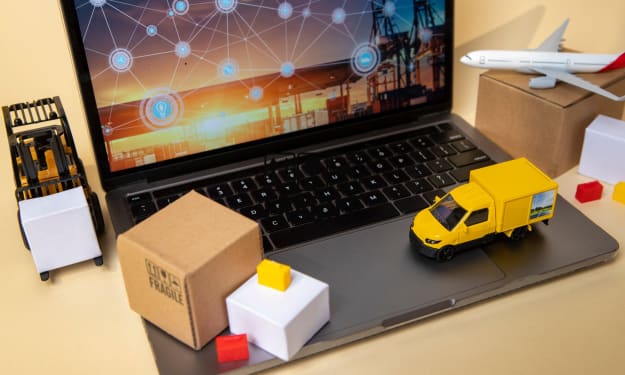
Have you ever struggled to get your laptop battery to charge? It can be frustrating, time-consuming, and even dangerous if you attempt to do it wrong. In this article, we'll teach you how to charge your battery by yourself, improving your efficiency and reducing the chance of confusion or injury.
What is a laptop battery?
A laptop battery is a small, rechargeable lithium-ion battery that powers your laptop. Laptops typically have a single battery that provides power to the computer while it is turned on. If you use your laptop frequently and the battery is low, you may need to charge the battery.
First, make sure your laptop is turned off to charge the battery. Next, remove the battery from your computer. You can do this by pressing down on one end of the battery and then pulling it out. Be careful not to damage the plastic casing or connector on the battery!
Now you will need to connect your charger to your laptop. Ensure that the charger is connected to an electrical outlet and that your computer is plugged into the charger. Once your laptop has been plugged into the charger, please wait for it to indicate that it is charging by displaying a light on its power button or by showing a progress bar on its screen.
Charging time will vary depending on how much juice your battery has left. Most laptops take around three hours to capture their batteries fully, but this time may vary depending on how old and depleted your battery is. Once your laptop's battery has been charged, you can turn it back on and resume using it as usual!
How do laptop batteries work?
Laptop batteries work by using a chemical reaction to power the laptop. The battery contains several cells, each with its voltage and capacity. When you turn on your computer, the battery starts charging from the wall outlet.
The battery charges until it reaches a certain voltage level when the chemical reaction stops, and the battery can start providing power to your laptop. The amount of time it takes for your battery to reach that voltage level is called its discharge time.
If you want to prolong the life of your laptop battery, keep it fully charged all the time. If you use your laptop occasionally and don't need it to be plugged in all the time, you can set your battery at home using a standard charger. This will help reduce the discharge time and lengthen the life of your battery.
When you buy a laptop, the battery is one of the last things you think about. But, like most things in life, your battery can be improved with effort. Here are some tips on how to charge your laptop's battery by yourself for improved efficiency:
First and foremost, ensure you have an appropriate power adapter for your computer. Most laptops use a standard AC adapter or USB port to recharge the battery.
To charge the battery using the AC adapter, plug it into an outlet and position the laptop so that the charging symbol is visible on the screen. The computer will begin to recharge as soon as it detects power.
To charge the battery using the USB port, connect your charger to the computer and insert the other end of the cable into an available USB port on your computer.
What are the different types of laptop batteries?
There are a few different laptop batteries, each requiring a specific charging procedure. The most common type of battery is the lithium-ion battery, which is used in many laptops. Other popular types of batteries include nickel-cadmium and nickel-metal-hydride.
You will need to use a special charger to charge a lithium-ion battery. You can find chargers for sale online or at your local electronics store. You will need to use an adapter and a compatible charger to set up a nickel-cadmium or nickel-metal-hydride battery.
There are a few different laptop batteries, and each requires a specific type of charging method. The most common type of battery is the lithium-ion battery, which is used in many laptops. Laptop batteries can be charged by plugging them into an outlet or using a charger that comes with the computer. Some laptops have proprietary chargers that only work with that specific laptop, so check before you start charging the battery.
Lithium-ion batteries can also be charged using a solar panel or a wind turbine. Solar panels convert sunlight into electrical energy, and wind turbines use the wind to turn gears that generate electricity. You can find more information on how to charge your laptop battery using these methods on websites like How-To Geek and Life Hacker.
How do you charge a laptop battery?
If you're like many people, you don't want to rely on your laptop's battery to last long when you're out and about. Luckily, there are a few simple ways to charge your laptop battery without needing to go to a power outlet.
One of the most common methods is to use a USB charger. This is the most straightforward option because almost every laptop has at least one USB port. Plug in your USB charger and let it do its job.
Another option is to use a solar panel or hand-crank power pack. If you have access to sunlight or an electrical outlet with a crank, these are great ways to charge your laptop battery without going anywhere else.
No matter which method you choose, be sure to keep an eye on your battery meter so that you can make sure it's getting the juice it needs. By charging your laptop battery using these methods, you'll improve its lifespan and save yourself some hassle and time in the future!
One of the most common issues people face with laptops is battery life. Like most people, you charge your laptop battery at home or work and forget to do it when you're out. There are a few different ways to charge a laptop battery without going to a charger.
One of the easiest ways is to use a power adapter that plugs into an outlet. This is the most common way people charge their laptops, but there are better ways. The best way to charge your laptop battery is by using a power adapter that plugs into the wall. This adapter has an indicator light that shows how much juice is left in the storm.
Another way to charge your laptop battery is by using a USB port on your computer. This method takes longer than an outlet, but it's more efficient because it uses less power than the AC adapter.
If you don't have access to either of those methods, there are still ways to charge your laptop battery. You can use a solar panel or a car charger if traveling. You can also use a docking station for your laptop if you have one, or find an outlet near where you're going and use that instead of plugging in directly into the wall.
Conclusion
Charging your laptop battery by yourself can help improve your device's efficiency, saving you time and money in the long run. Following these steps, you can quickly charge your device's battery without visiting a service center. So whether you're looking to conserve energy or want to get more out of your device, charging your laptop battery is a great way to start.
About the Creator
Gurugets
Technology refers to the application of scientific knowledge for practical purposes, such as in the design, development, and use of machines, equipment, and systems.






Comments
There are no comments for this story
Be the first to respond and start the conversation.